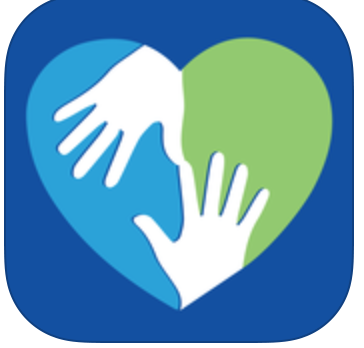Lesson 6: Children, Adolescents, and Mental Health
Attention
Clinging, crying infants and todldlers.
Slow to toilet-train toddlers.
Anxiety and depression in several months old babies.
Insecure, oppositional, confused attachment to caregiver(s).

How can this be? How would you know? It turns out that EVERYTING children do is significant. Even if they are pre-linguistic, they can still register emotions by facial expression, body posture, and vocalizations. They can show how they feel. They can vocalize distress. They can play repetitively, and seemingly pointlessly, but actually be showing their discomfort and confussion.
Jean Piaget gave psychology a roadmap for cognition. Erik Lenneberg the same for language throughout the lifespan. The work of Caroll Izard, Charles Darwin, and Paul Ekman describe an emotional landscape perhaps even more important. Arnold Gesell provided a normative timetable across physical/language, emotional, and social development.
Learning Outcomes
Upon completion of this lesson's material, students will be able to:
- Describe contributing factors to mental health problems among children and adolescents.
- Describe the challenges associated with diagnosing mental illness among children and adolescents.
- Explain several common mental health problems among children and adolescents and the related symptoms.
Teaching
Reading
- Please view "The Trouble with Evan," produced by Neil Docherty. This is very intense material. I have had students in class who could not sit through it. Parenting makes a difference, it "takes a village to raise a child" successfully. No kidding!

The Trouble with Evan...click HERE to view directly on YouTube
Here is also a follow up article about this documentary that provides an interesting perspective:
http://www.nytimes.com/1994/06/21/arts/review-television-filming-the-life-of-a-troubled-family.html
Lecture
By Professor Joel Goodstadt: "Years ago, I was in the Department of Psycholgy at St. John's University, Jamaica, New York. The doctoral program in clinical psychology had two separate tracks. Either you were in the childhood track, or the other, which was for working with patients beyond the age of adolesence. Parents of children calling for neurological consult with world famous neurologist Oliver Sacks, are frequently surprised to learn that he does NO casework with children. While he was a medical specialist, it was not with children. Training to understand the signs and behavioral signals of distress is what the child, infant, early childhood, and adolescent training is about."
How can I begin to prepare you to work with children and teenagers? The first thing to remember is that working with them is different from working with adults. If you approach teenagers the way you do adults you will not get very far.
One way to help make sure children are going to be healthy is to make sure they are not exposed to trauma, abuse and stressful enviroments at a young age.
Prevention and early intervention are crucial for the mental health of our children: http://www.mentalhealthamerica.net/issues/prevention-and-early-intervention-mental-health-consequences-failing-our-children
Read about the incidence of Child Abuse in Maine. This data (see link below) is labeled by county. KVCC is located in Somerset County which has one of the highest levels of substantiated child abuse in the State of Maine over the last couple of years. Substantiated child abuse means that someone reported the potential abuse of a child, the Maine Department of Health and Human Services (DHHS) investigated the report and found that there was actually abuse occurring. The finding of abuse results in the substantiation. If there was no abuse found the report would be considered unsubstantiated.
Maine DHHS report: 2015 Maine Child Protective Services (CPS) Annual Report
Teen Suicide
Here are some numbers about teen suicide that are straggering. We as mental health professional may often be the first individuals who may begin to see signs and symptoms that a teen is thinking about suicide (Statistics from http://jasonfoundation.com/prp/facts/youth-suicide-statistics/).
- Suicide is the SECOND leading cause of death for ages 10-24. (2013 CDC WISQARS)
- Suicide is the SECOND leading cause of death for college-age youth and ages 12-18. (2013 CDC WISQARS)
- More teenagers and young adults die from suicide than from cancer, heart disease, AIDS, birth defects, stroke, pneumonia, influenza, and chronic lung disease, COMBINED.
- Each day in our nation there are an average of over 5,400 attempts by young people grades 7-12.
- Four out of Five teens who attempt suicide have given clear warning signs
Teen Suicide Prevention Video (https://www.youtube.com/watch?v=3BByqa7bhto)
Suicide warning signs in teenagers:
- Suicide Threats: Either Direct or Indirect Statements - People who talk about suicide, threaten suicide or call suicide crisis lines are 30 times more likely than average to kill themselves. Take suicide threats seriously.
- Previous Suicide Attempts - One out of three suicide deaths is not the individual’s first attempt. The risk for completing suicide is more than 100 times greater during the first year after an attempt. Take any instance of deliberate self-harm seriously.
- Preoccupation or Obsession with death or suicide such as writting essays or poems about death or creataing artwork, such as drawings depicting death.
- Signs and symptoms of Depression - This can look like sudden and abrupt changes in personality; Expressions of hopelessness and despair; Declining grades and school performance; Lack of interest in activities once enjoyed; Increased irritability and aggressiveness; Withdrawal from family, friends and relationships; Lack of hygiene; Changes in eating and sleeping habits.
- Final Arrangements - Once the decision has been made to end their life, some young people begin making final arrangements. this might look like giving away prized or favorite possessions; putting their affairs in order; saying good-bye to family and friends; making funeral arrangements
- Other Signs - Such as experiencing a recent loss – a loved one, relationship, job, etc. Increased use or abuse of alcohol or drugs; Recent separation or divorce of parents; Feelings of loneliness or abandonment; Feelings of shame, guilt, humiliation or rejection; Emotional stress and difficulties may result in physical complaints, such as head-aches, stomach-aches, loss of energy, etc.; Taking excessive risks, being reckless; In real or serious trouble, especially for the first time; Problems staying focused or paying attention; Experiencing a recent loss – a loved one, relationship, job, etc.; Increased use or abuse of alcohol or drugs; Recent separation or divorce of parents; Feelings of loneliness or abandonment; Feelings of shame, guilt, humiliation or rejection; Emotional stress and difficulties may result in physical complaints, such as head-aches, stomach-aches, loss of energy, etc.; Taking excessive risks, being reckless; In real or serious trouble, especially for the first time; Problems staying focused or paying attention.
- Always remember this is not an exhastive list. The signs and symptoms can look different for each individual
From: http://jasonfoundation.com/prp/facts/signs-concerns/
This free app called Onondaga SPS. It is a suicide prevention and support app. It is designed to help users easily access and recognize the signs of suicide in friends and family and get them the help they need, fast. It’s not a substitute for professional diagnosis and treatment, but rather a “first line of defense” that offers people some solid information and useful tools that they can use to help someone they love make it through a difficult time. Please be aware that Onondaga County is in New York State so their hotlines connect you to New York resources. I liked the resources that it offered for teenagers, veterans and adults as well as anyone who may be presenting with suicidal thougths or behaviors. Onondga SPS https://itunes.apple.com/us/app/onondaga-sps/id995701037?mt=8 |
____________________________________________________________________________________________________________________________
Autism
We are in an era of extraordinary growth in the rate of diagnosis for Autistic Spectrum Disorder in childhood. When the DSM-5 was published in 2013 there were significant changes to the definition of Autism and Pervasive Developmental Disorder. As a result individuals with a well established DSM-IV TR (1994) diagnosis of Autistic Disorder, Asperger's disorder, or Pervasive Developmental Disoder Not Otherwise Specificied (NOS) should be given the diagnosis of Autism Spectrum Disorder when using the DSM-5.
The Autism Speaks website offers the full DSM-5 Diagnositic Criteria for Social (Pragmatic) Communication Disorder and Autism Spectrum Disorder: Autism Spectrum Disorder Dx
Here is a documentary about What it's like to have a Brother with Autism: https://www.youtube.com/watch?v=QHC0FzywHGY
Article about the changes in the DSM IV language and its impact on the increase in the number of individuals meeting the diagnostic criteria: https://www.disabilityscoop.com/2012/06/29/autism-surge-analysis/15957/
This article indicates the DSM-5 diagnostic changes may result is fewer individuals diagnosed: http://healthland.time.com/2014/01/22/autism-cases-may-drop-under-new-diagnostic-criteria/
What do you think? One can always find perspectives from both sides.
Assessment
Lesson 6 Quiz
- Describe, in your own words, some of the signs and symptoms that a teenager may be depressed and suicidal. What resources would you refer the teenager to in your home community (include agency/service name, website, services provided and/or phone number).
- What are your thoughts about the prevelence (how often autism is diagnosed) based on the readings in this lesson? Connect your opinions to some of the facts you read in the provided resources or, if you accessed additional resources, include where you got the information (provide the reference).
Lesson 6 Discussion (online class only)
In the past there were times when it was considered ok to sterilize an individual who has significant disabilities or mental health issues. We have moved past that concept as a society but need to recognize there continue to be individuals who many not have the appropriate skills, capacity or understanding on what it takes to raise a happy, health child. There are also individuals who have malicious intent who are also parents. In mental health we need to believe that everone has the capacity for improvement and rehabilitation. What are your thoughts about a parent whose child is placed in state custody through the Department of Health and Human Services due to abuse and/or neglect. Should we prevent them have other children? Why? What feelings does this question bring up for you?

